AI Across Moody
Erin Reilly's Creativity in AI (ADV/PR 378)
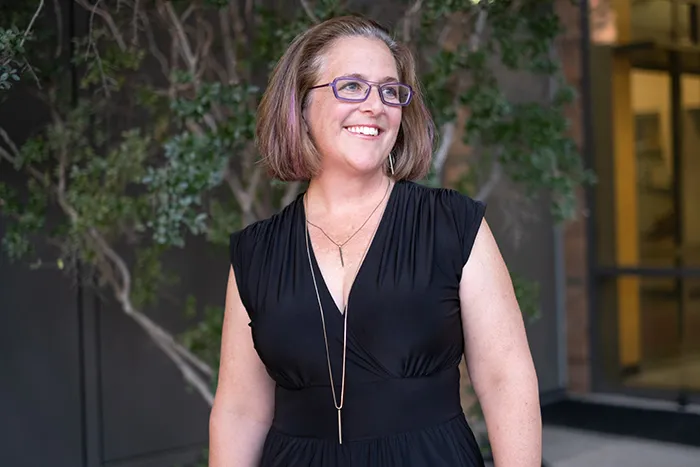
Experimenting with new AI tools independently each week was eye-opening. I now see AI not just as a tool but as a creative partner.
Course Details
The Creativity in AI course offers students a chance to explore how AI can enhance creativity across various fields, such as art, music, writing, and design. Through interactive sessions, students learn the practical application of AI tools, ethical considerations, and how AI reshapes creative processes. The course is designed for hands-on experimentation, enabling students to understand AI's potential and limitations critically and responsibly.
The course aims to demystify AI and introduce students to its practical and transformative power in creative contexts. By engaging directly with AI tools, students gain insights into how AI can both inspire and challenge traditional creative practices. This hands-on experience encourages students to think critically about the technology’s impact on creativity and its ethical and societal implications.
Students are encouraged to approach AI with a critical lens, addressing ethical issues such as bias, copyright, and stereotyping. The curriculum emphasizes responsible usage and ethical compliance, ensuring students not only recognize AI’s creative potential but also its limitations and risks.
Generative Experiments: Weekly activities involve exploring various generative AI tools for text, image, audio, video, and character creation. Students document their process, challenges, and platform limitations through reflective submissions.
Design Fiction Project: Teams create speculative future scenarios using AI to produce short videos and interactive media, evaluating the societal impact of AI on creativity. The final project includes a video, a three-page report, and a peer review, focusing on creativity, clarity, and ethical considerations.
Prompt Engineering: Students learn to create effective prompts for AI tools, a skill useful in diverse AI-driven roles.
Tool Comparison and Selection: Choosing the right AI tool for specific tasks, such as switching from DALL-E to MidJourney for try different visual styles.
Collaborative Problem Solving: Working solo or in teams of 2 for speculative design fiction projects, students build skills in using AI tools collaboratively to create cohesive narratives
Reflection Assignments: Building opportunities for students to articulate their growth process during learning experiences strengthens knowledge retention and transferability. Especially in the context of emerging technologies and creative thinking challenges, reflections provide accurate, authentic assessments. The assessments can be structured for formative feedback with chances to improve or as a summative measure of learning.
Student Reflections and Products Using AI
6 Word Memoir
"On the first day of class when the activity was introduced and we were given time to play with it, I tried using Midjourney to begin with, not sure if it is because I had an account for a while but it wouldn’t let me use it. So I pivoted to DreamStudio which was easier to sign up for. My first prompt was caring, dependable, latina, flowing through life. But I was having a hard time getting an image that depicted what I had in mind. I applied the comic effect to see what it would generate but it gave me a “textbook” latina that didn’t feel like me and wasn’t portraying the prompt too much. I tried changing the word Latina for Panamanian and changed the effect to photographic and it gave me beautiful images of what looked like Panama’s nature and a person in the river or water. It felt closer to a vibe that resonated but still wasn’t portraying the prompt the way I wanted to. I kept playing with all the styles but it started giving me just portraits with no context. I tried changing softwares one more time, experimented with DALL-E and adjusted the prompt. I asked it for an image that visually represented: ‘Latina from Panama, flowing, experimenting, growing.’ The first image it generated is the one I ended up selected although I did try asking it to improve the grammar from the image and played with different styles but ultimately it wasn’t improving and the first option is the one I liked best."

Compare & Contrast
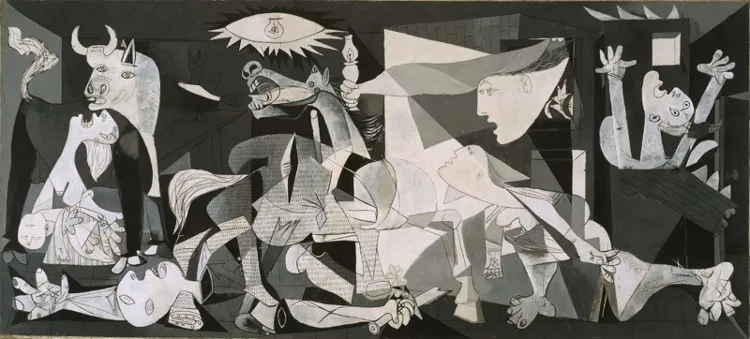
Picasso's Guernica,
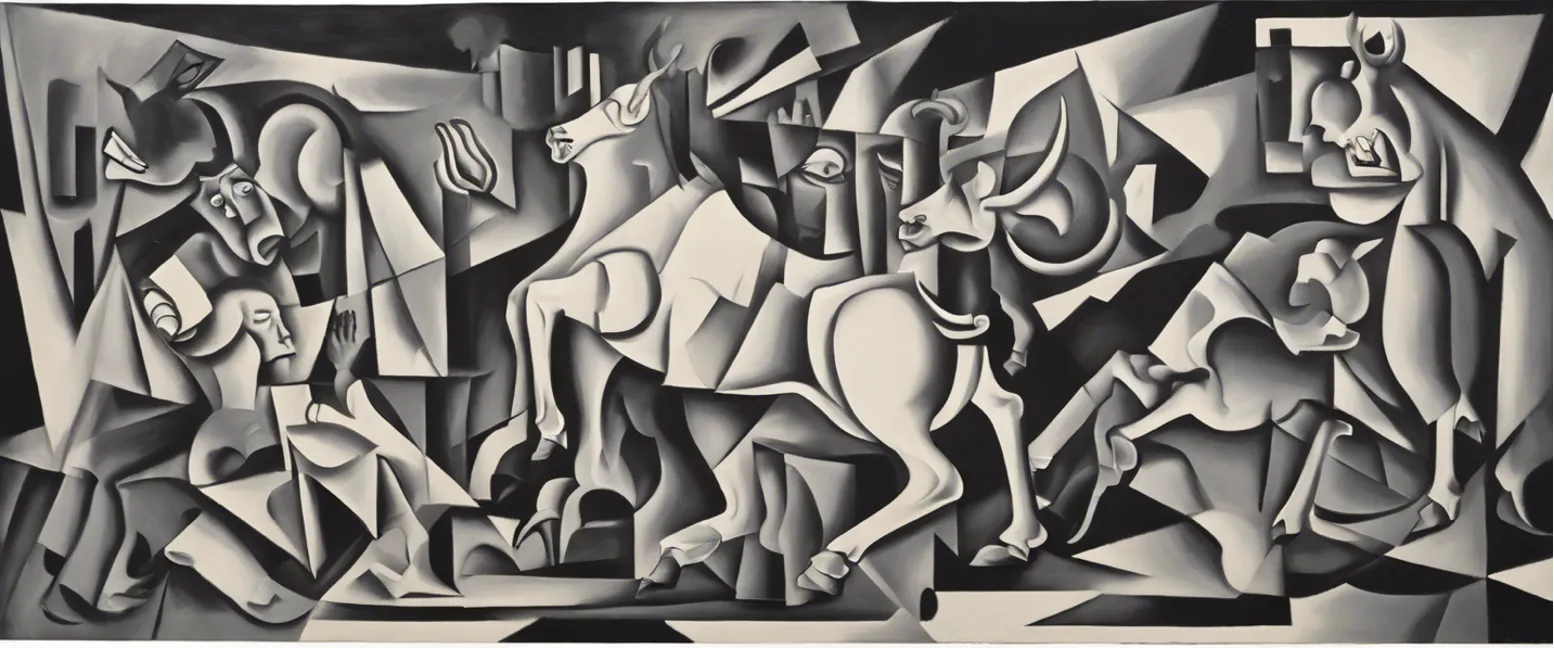
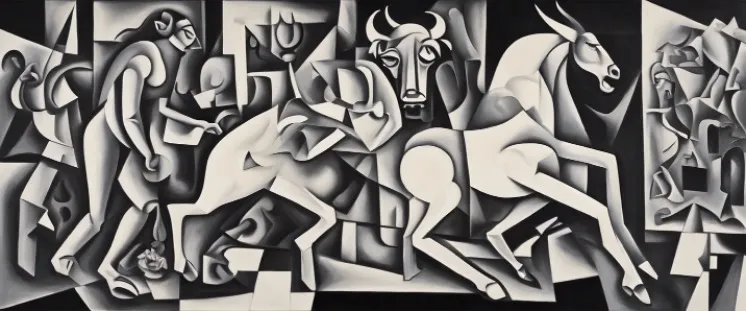
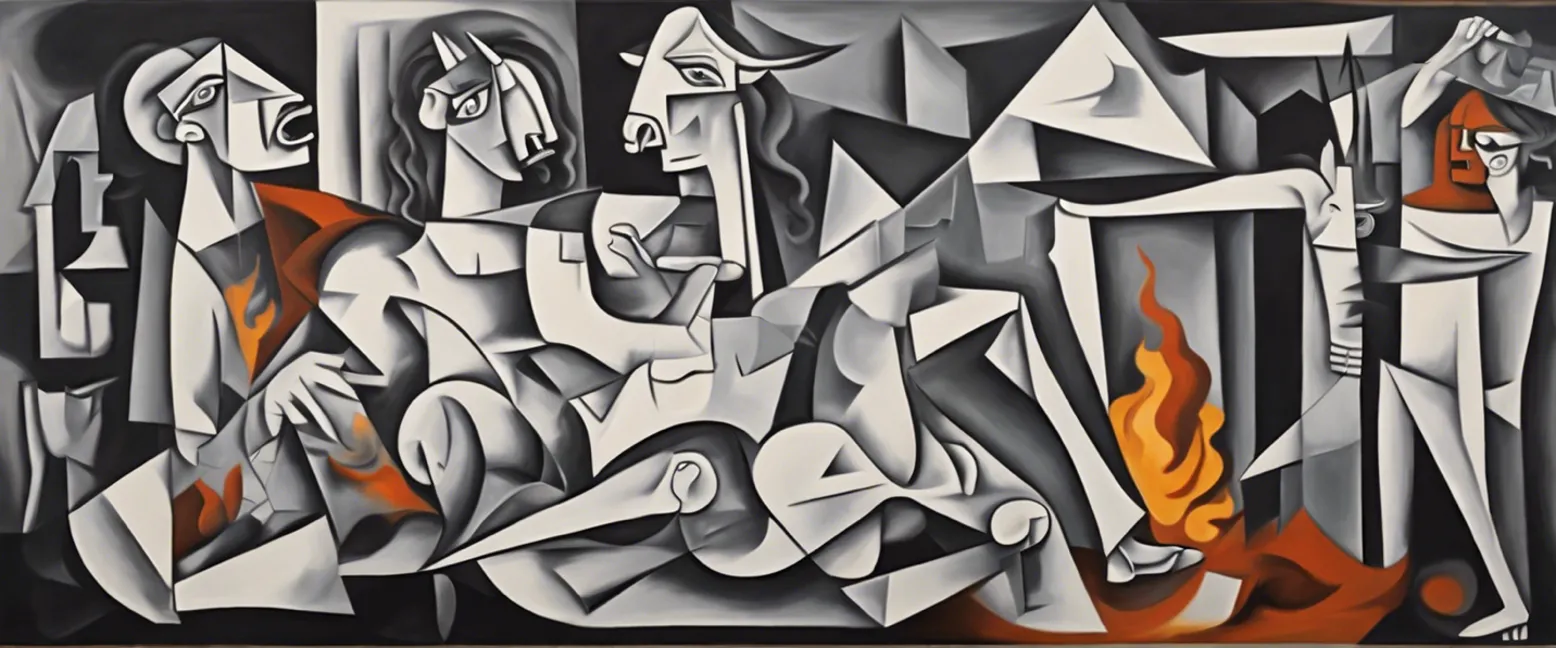
"I chose Picasso's Guernica. It's possibly the world’s most famous anti-war piece of artwork. I've been thinking about it a lot while witnessing the destruction in Gaza. Picasso painted it after seeing photos of the fascist aerial bombing of the Basque town of Guernica. It was the world's first carpet bombing of any population. The Nazi military (in league with fascist Spain's Franco government) were testing out this technique and was one of the first times civilians had been targeted in mass numbers in an urban area. The original painting is 25.5 feet long and 11.5 feet tall. I grew up with a replica painting my father commissioned that was four feet long. So I've spent countless (morbid and depressing) hours observing it. I used DreamStudios but I also wanted to see what DALL-E would do. DALL-E refused to make an images that included the imagery I needed. Giving me this message over and over: 'Error creating image I'm unable to generate images depicting violence, suffering, or war due to content policy restrictions. If you have any other requests or need assistance with a different topic, feel free to let me know, and I'll be glad to help.' With Dream Studios I at first tried to replicate Guernica with prompts simply from my memory of the piece (without mentioning Picasso or Guernica), but I struggled to create the imagery I was looking for. I included information that was not necessary (that it was an aerial bombardment during Spain's civil war for instance) and this unnecessary information did not give me the detail I was looking for. After dozens of failed attempts I simply took the description of the painting from Wikipedia, which was very straight forward, and edited it to my liking. Dream Studios had no problem with 'dismembered soldier,' 'dead baby,' 'gored horse,' or 'screaming woman.' BUT got stuck at one point and i went through and deleted sentences until I discovered that it did not want me to list (in my long descriptive text) 'woman holding a baby,' which is very weird. I played with this description for awhile until I got back something pretty similar to what I was looking for.
Two of my final imitations using this prompt (not mentoning Picasso or Guernica). Make a cubist oil painting with grey, black, and white colors. portraying the suffering wrought by violence and chaos. Prominently featured in the composition are a bull, screaming women, a dead baby, a dismembered soldier, a horse, and flames. The scene occurs within a large room. On the left, a wide-eyed bull, with a tail suggesting rising flame and smoke. The woman's head is thrown back in grief and her mouth is wide open. A horse falls in agony in the center of the room, with a large gaping hole in its side, as if it had just been run through by a spear or javelin. A dead soldier lies under the horse. The hand of his severed right arm grasps a shattered sword, from which a flower grows. A bare light bulb in the shape of an all-seeing eye blazes over the suffering horse's head. a frightened woman's head and extended right arm reach through a window. she carries a flame-lit lamp in her right hand, and holds it near the bare bulb. Below her a woman in shock staggers from the right towards the center while looking into the blazing light bulb with a blank stare. To the bull's right a dove appears on a cracked wall through which bright light from the outside shines. On the far right of the room there is a fourth woman, her arms raised in terror. Her wide-open mouth and thrown back head echo the grieving woman's. She is entrapped by fire from above and below, her right hand suggesting the shape of an airplane. A dark wall with an open door defines the right side of the room. I then added Picasso to the prompt to see what would happen.
1. The AI tool/my prompting was unable to grasp the crisp intensity and unique brush strokes of the original. Which is not surprising since I gave no artistic prompting besides "cubist," "oil paint," and the colors grey, black and white. If I were to continue this prompting I would start adding language found in visual design and even the oil painting world to be more precise.
2. Not a threat at all, these images are so far from an actual giant oil painting that was done as a spectacle.
3. Doing this gave me an incredible in depth way to dive into what really makes this painting what it is. This is a great way to learn about visual art.
4. There's a story with every piece of art. As an art handler for years I know that many famous artists don't physically make their own art, their employees do. So who is the artist? Sometimes art handlers have to install complex sculptures at art fairs. So who made it? It's about story and context always. Or lack of. In a world of AI art we now know that much can be AI made so we can discover if it is or choose to ignore, but the knowledge is out there that its possible so that puts the pressure on the observer of the art to know. Do people know that much of the famous Jeff Koons or Banksy, for instance, are not actually physically made by them? Do people care? Hard to know. Some do, some don't. But often people want to know the story of how something was made and that is part of the art. So it is with AI."

